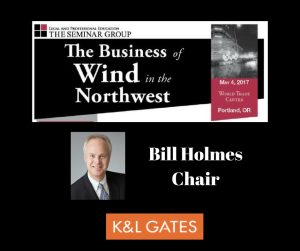Following an auction on March 16, 2017, the U.S. Department of the Interior’s Bureau of Ocean Energy Management (BOEM) named Avangrid Renewables, LLC (Avangrid) the provisional winner of the auction. Avangrid, majority owned by global energy firm Iberdrola, S.A., outbid three other auction participants to secure rights to a 122,405-acre area off the coast of Kitty Hawk, North Carolina. Avangrid and BOEM will now work to finalize the provisional lease and continue to develop the project.
BOEM has not scheduled any other lease auctions for offshore wind projects on the Outer Continental Shelf. However, as this month’s unsolicited bids for offshore Massachusetts and New York demonstrate, businesses remain interested in developing offshore wind projects with or without an open lease application solicitation. Therefore, in addition to submitting unsolicited lease applications, there is an opportunity to advocate at the federal level with the Trump Administration and BOEM to continue the leasing program on the Outer Continental Shelf and to continue advocating for state-level incentives for offshore wind projects.
The Auction Process and the Winning Bid
Following years of preparation, BOEM announced its plans to hold the North Carolina Outer Continental Shelf lease in January 2017. Nine bidders pre-qualified as “eligible bidders” under BOEM’s auction rules. Four companies participated in the March 16 auction:
- Avangrid
- Statoil Wind US LLC
- Wind Future LLC
- wpd offshore Alpha LLC (wpd offshore)
The bidding lasted 17 rounds, with Avangrid and wpd offshore both bidding more than $8 million in the 16th round. Avangrid’s 17th round bid of $9,066,650 successfully secured the provisional win for Avangrid.
Next Steps for the North Carolina Lease and Beyond
Part 585 of the Code of Federal Regulations lays out the next steps for finalizing the lease for the offshore North Carolina block. First, the U.S. Department of Justice and the Federal Trade Commission will review BOEM’s auction process. Then Avangrid must execute the lease, file financial assurance, and pay the balance of the “bonus bid” (the difference between the winning bid and the applicable bid deposit) within 10 days of receiving the lease documents.
Once the lease is finalized, Avangrid will have one year to submit its Site Assessment Plan (SAP) to BOEM. The SAP describes the initial activities the leaseholder will undertake to evaluate the lease site (federal guidance available here). If approved, BOEM’s regulations allow Avangrid five years to develop and submit a Construction and Operations Plan for BOEM’s approval, although the plan must be filed at least six months prior to the end of this five-year period. A Construction and Operations Plan outlines the facilities that the leaseholder plans to construct and use for its project, as well as construction activities, commercial operations, and decommissioning plans (additional federal guidance here). Once the Construction and Operations Plan is filed, BOEM will evaluate the potential environmental impacts of the proposed project and reasonable alternatives, as well as solicit public comment. If BOEM approves the Construction and Operations Plan, Avangrid would have a 25-year commercial lease term with the possibility of renewal.
More broadly, the North Carolina offshore wind lease auction was the last pending open auction. BOEM has evaluated potential commercial leasing and received indications of commercial interest in other Outer Continental Shelf areas, such as offshore California, Hawaii, and South Carolina, but the agency has not set a timetable for announcing any further competitive lease auctions. In the absence of an open auction, interested parties may submit unsolicited lease applications in accordance with 30 C.F.R. § 585.230.
There is also an opportunity to advocate for additional competitive Outer Continental Shelf lease auctions with the Trump Administration. President Donald Trump’s “America First: A Budget Blueprint to Make America Great Again” proposes a 12 percent cut to the Department of the Interior’s budget, suggesting that agencies like BOEM within the Department may be de-emphasized under the new Trump Administration. In contrast, Secretary of the Interior Ryan Zinke called the results of last week’s North Carolina auction a “big win for collaborative efforts with state, local, and private sector partners,” so the Trump Administration, as well as legislators in Congress, may be disposed to support continued offshore wind development as this year’s federal budget debate unfolds.
 There is a lot of buzz around blockchain technology and its potential to revolutionize a wide range of industries from finance and healthcare to real estate and supply chain management. Reports estimate that over $1.4 billion was invested in blockchain startups in 2016 alone, and many institutions and companies are forming partnerships to explore how blockchain ledgers and smart contracts can be deployed to manage and share data, create transactional efficiencies, and reduce costs.
There is a lot of buzz around blockchain technology and its potential to revolutionize a wide range of industries from finance and healthcare to real estate and supply chain management. Reports estimate that over $1.4 billion was invested in blockchain startups in 2016 alone, and many institutions and companies are forming partnerships to explore how blockchain ledgers and smart contracts can be deployed to manage and share data, create transactional efficiencies, and reduce costs.
